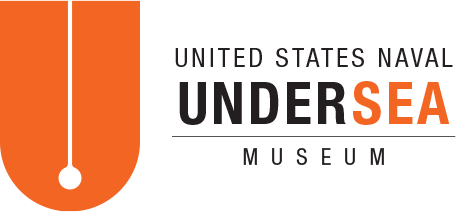By Beth Sanders, Collections Manager
With 50,000+ artifacts in our collection, the dedicated collections team at the U.S. Naval Undersea Museum is operating behind the scenes in ways that may surprise you!
During my routine pest trap monitoring last month, I took a moment to say hello at the front desk and, when asked what I was doing, shared what is involved in the museum’s Integrated Pest Management (IPM) program. IPM is overseen by a Collections Manager here at USNUM, as is common in the museum field (no, I didn’t draw the short straw!). The reason for this is because there are pests which may not be detrimental to a building, but could pose a serious risk to the artifacts in our care. If a collections manager learns to identify hazardous pests, then we can be the ones to determine if extra care or caution need to be taken. This quick conversation left me feeling a little “buggy”, because there’s a lot more to collections management than meets the eye – so let’s take a quick, close look at it using my trusty IPM microscope!
Did you know that Lorraine maintains environmental records for the facility going back decades? Each month we take readings from environmental monitors located around collections storage and the galleries, so that we can track the preservation environments we are storing our collections in. This information allows us to anticipate what types of materials we should store and display in different areas of the building, based on the controls and sensitivities of the systems in place there. You can learn more about this from webinar slides Lorraine presented for volunteers in 2021.
The HVAC system in the galleries controls both temperature and relative humidity, a win for the artifacts and giving us more flexibility, but the artifact storage area only has heat fans that kick on at cold temperatures. This leads to larger swings in temperature, and inspired Beth to advocate for the installation of HVAC in that area as well. The project is gaining traction with NAVFAC, and we’re hoping to see it realized in the next few years if the momentum stays strong. While Olivia takes the lead on these large facility projects, those impacting collections (such as HVAC, lighting, and anything that affects the levels of security or risk to collections) will also have a collections manager involved in planning or overseeing the project.
This was particularly critical a few years ago when the building’s roof was replaced and we worked to prevent debris falling on artifacts, but it also includes improving the way we store our collections. More than just choosing the best archival materials to house objects in, collections staff have overseen the contracting and installation of five compact storage solutions in our spaces since 2009. Our goal is to continuously improve our storage areas!
But all of these efforts would be in vain without the collections themselves. Lorraine takes on the pivotal role of ensuring that legal status and ownership of donations are communicated and conveyed to the Navy through the Deed of Gift paperwork. This paperwork is signed both by those who donate artifact(s) and by Director Cox of the Naval History & Heritage Command, who accepts the donation on behalf of the Navy. Lorraine collaborates closely with headquarters staff, NHHC Counsel, and the public to ensure the forms are filled out correctly, giving the museum legal rights to have and use the materials we collect.
Beth works closely with the exhibits team, planning and executing the incorporation of artifacts into our exhibits. From condition reports, through lighting and case requirements, to overseeing safe mounts, and finally to installation, Beth is there. After installation, she’s still seen cleaning fingerprints off of the cases, and is responsible for keeping the artifacts on display clean.
Both Beth and Lorraine spend a lot of time thinking about ‘what if’, and it’s not just what if there is some dust on an artifact. Collections Management involves disaster planning and risk mitigation, and thinking about both how to avoid situations that would put our artifacts at risk, and what to do if there was a disaster. Also involved in risk mitigation are some Navy safety requirements: managing our inert, or non-explosive, ordnance collections and a radiation safety program. Both of these are critical for being able to welcome visitors into our premises safely, and are treated with the highest level of significance.
All that to say, we do get to spend a lot of time looking at artifacts, but it’s not just collections we manage! The whole building impacts the way our artifacts are cared for, and we benefit from the efforts of the entire museum staff to ensure that we are always working towards the best interests of the collection.
